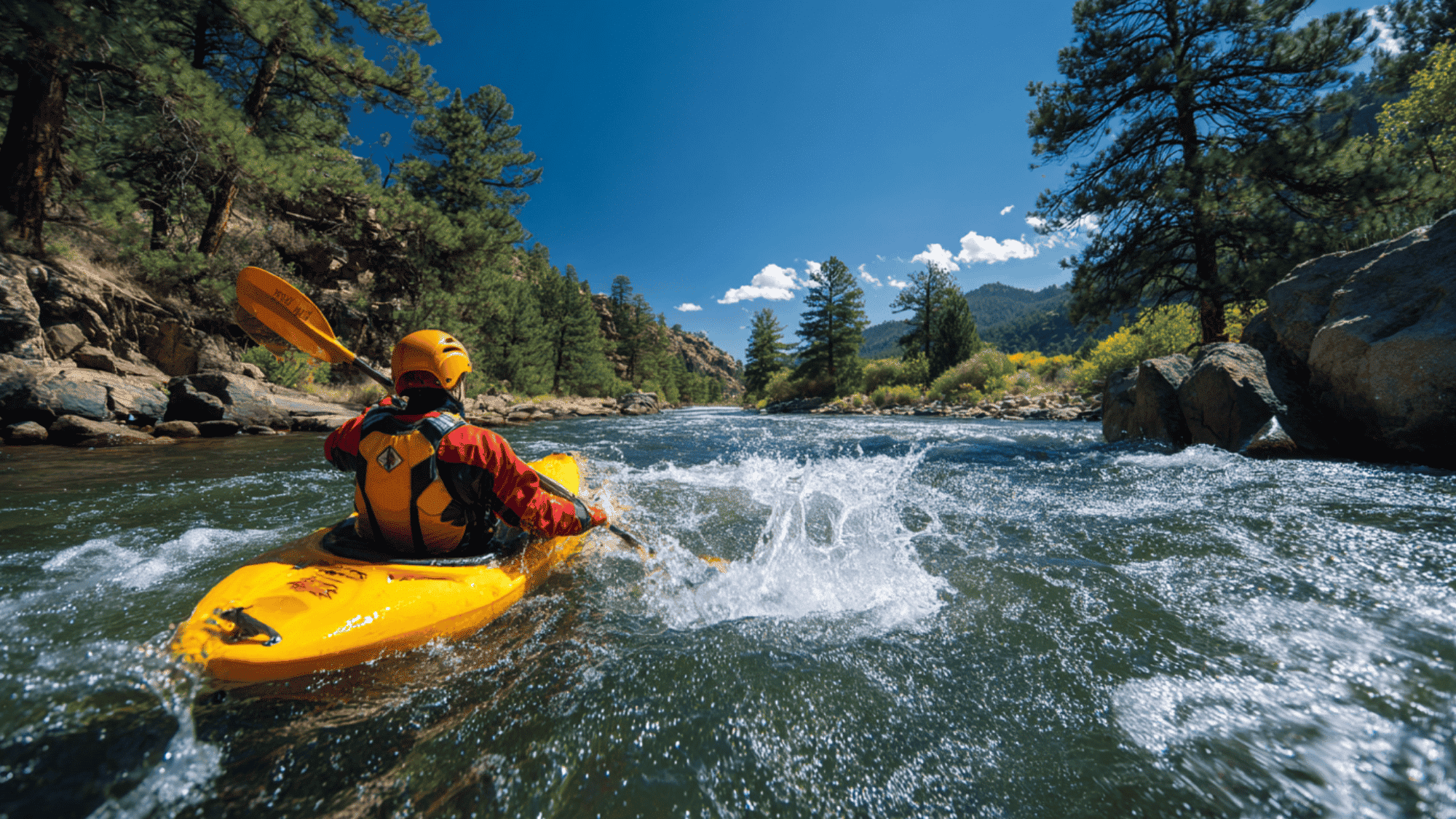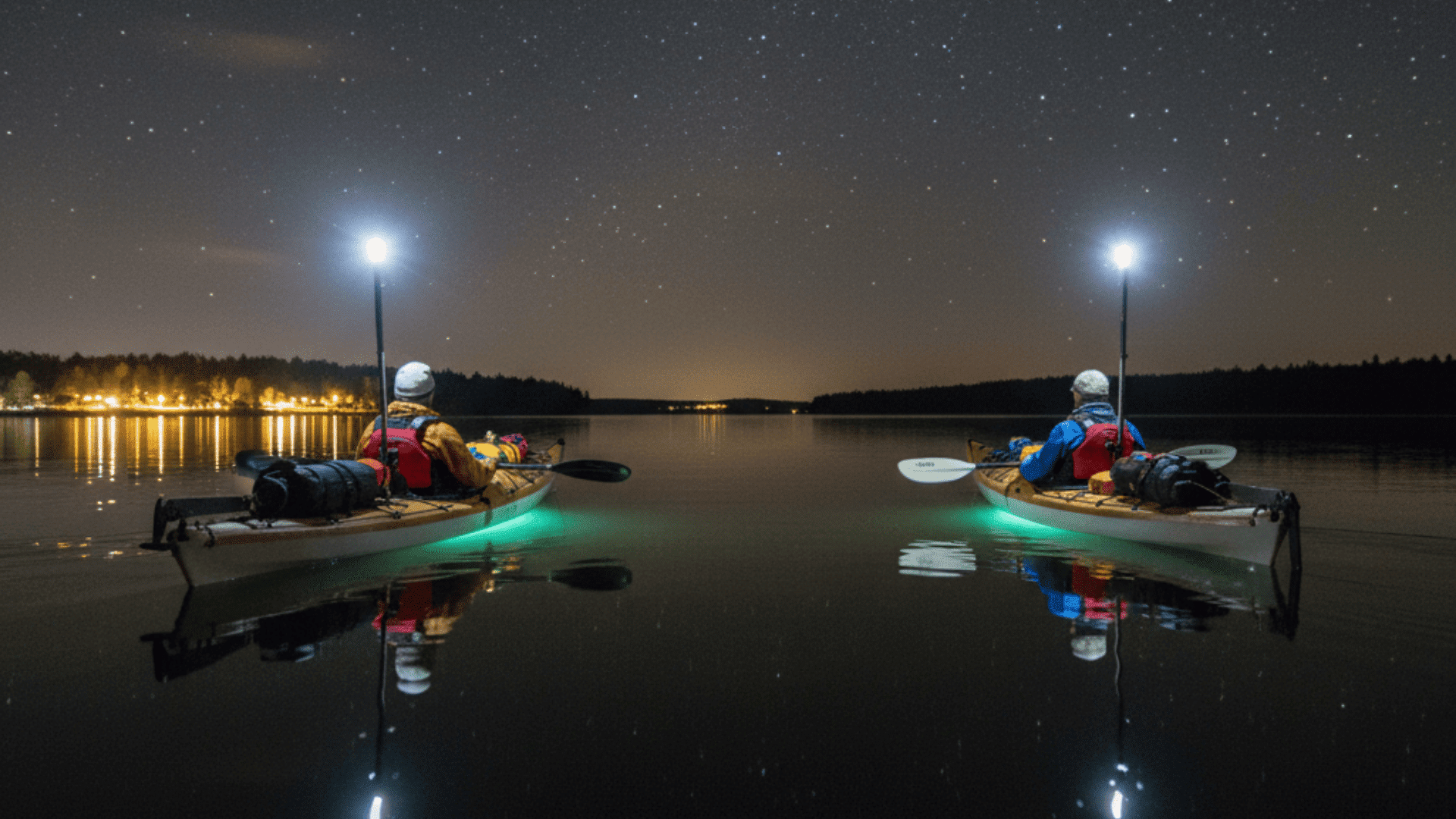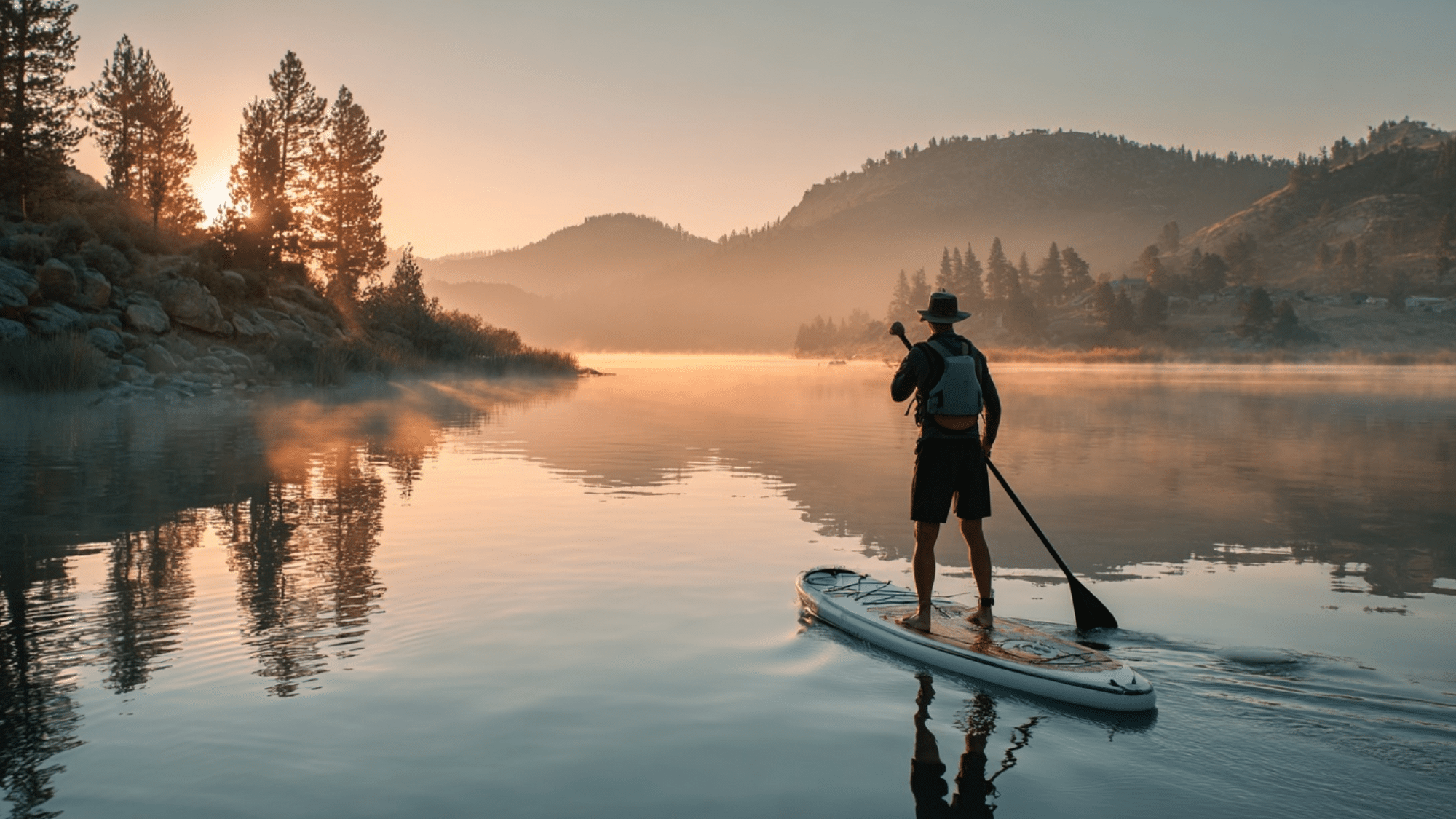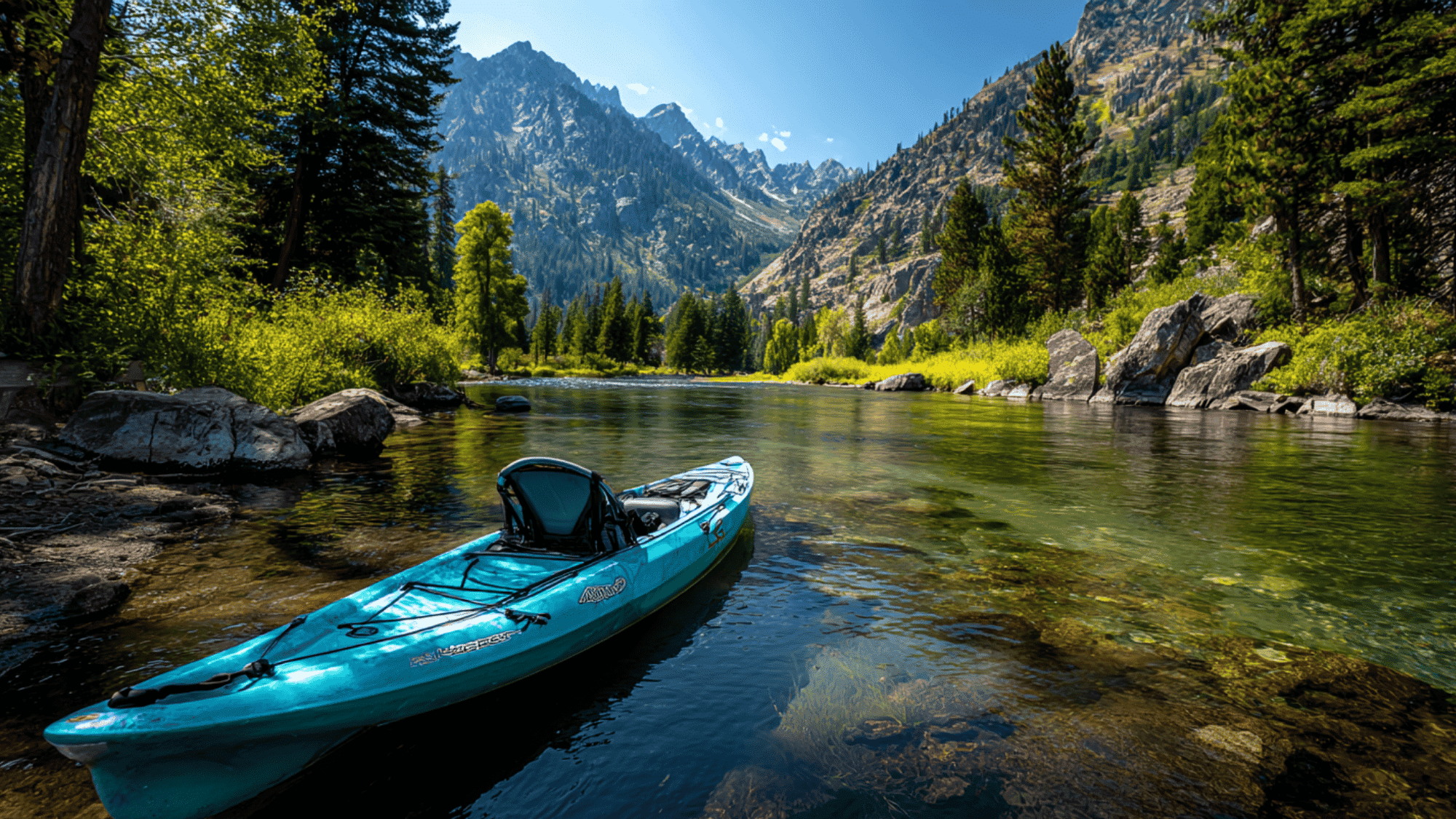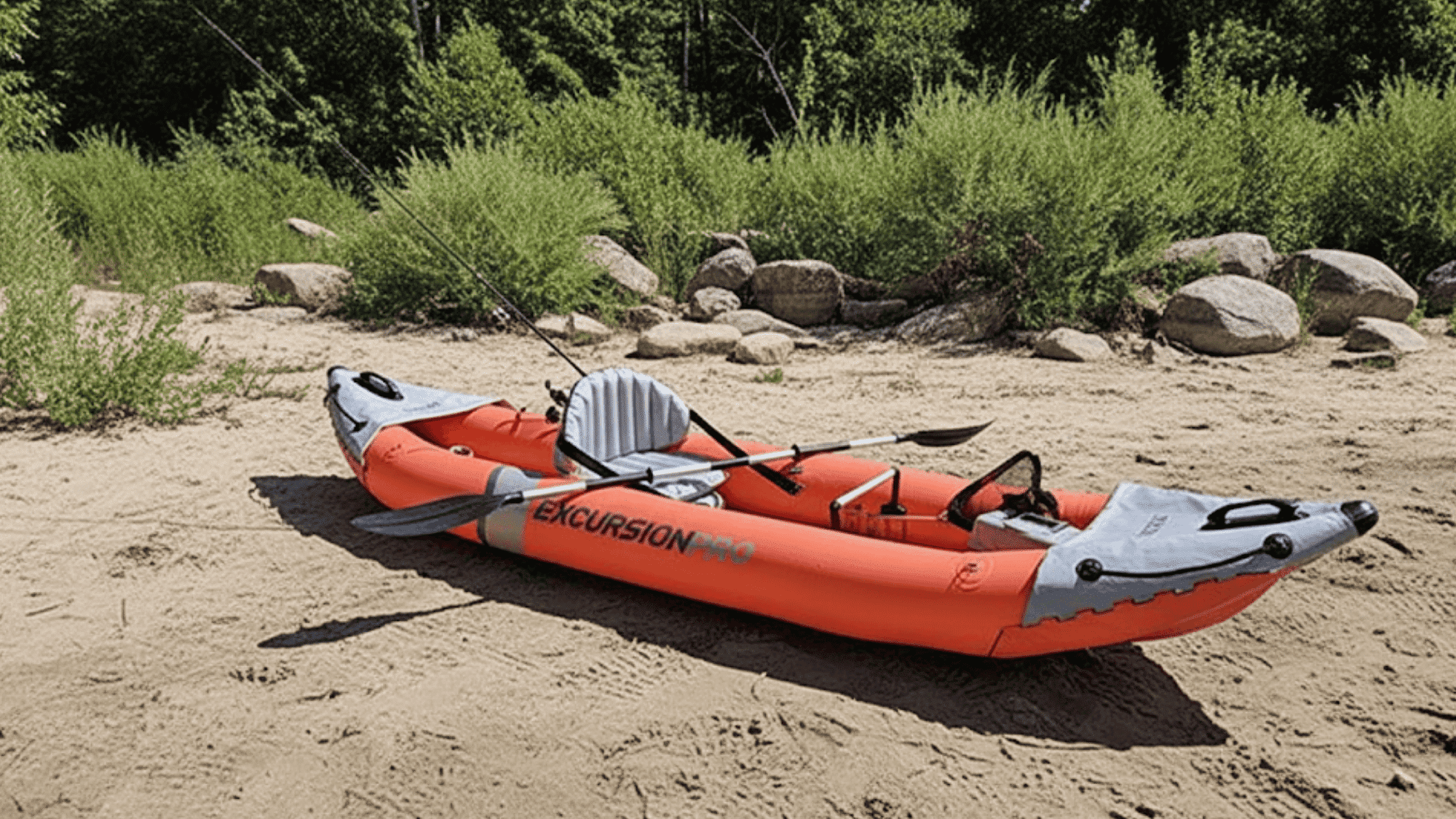If you’ve just started kayaking, you may find yourself wondering how long to kayak a mile.
It’s a common question, and the answer can help you plan your outings, manage your energy, and enjoy your time on the water without surprises.
The truth is, the time it takes isn’t the same for everyone. Your average kayak speed depends on a mix of things like your paddling experience, the kind of kayak you’re in, and if you’re on a calm lake, a winding river, or the open sea.
Even the weather and water conditions can make a big difference.
We will help you understand the average time it takes to cover a mile, explain what affects your speed, and share some helpful tips so you can better understand your own paddling pace.
How Long Does It Normally Take to Kayak a Mile?
On average, most recreational kayakers can expect to paddle a mile in about 20 to 30 minutes under calm conditions.
This is a general guideline and works well as a starting point for beginners and casual paddlers. The actual time, however, can vary widely depending on factors like your experience, the type of kayak you’re using, and the water conditions.
For example, skilled paddlers in touring or racing kayaks may finish a mile in under 15 minutes, while beginners in recreational or inflatable kayaks may take closer to 30–40 minutes.
Instead of focusing on a single “perfect” number, it’s better to think in ranges. That way, you can plan your trip realistically while also adjusting for weather, currents, or your own energy level that day.
What Can Change Your Kayaking Speed
Not every kayaking trip feels the same, and that’s because several factors affect how quickly you move through the water. The type of kayak, the conditions around you, and your personal skill all play an important role.
Let’s look at the main things that can change your kayaking speed.
Weather and Water Conditions
Nature is a big factor in your paddling pace. Calm water gives you a steady rhythm, while wind, waves, and upstream currents make things harder and slower.
On the other hand, paddling downstream or with a tailwind can increase your speed, allowing you to cover extra distance with less effort. Conditions can significantly impact your mile time.
Your Skill and Fitness
Your own ability plays a major role in how fast you move. Beginners may become tired quickly and use less efficient strokes, which can slow them down.
With practice, paddlers develop stronger technique and endurance, making each mile easier.
Experienced kayakers use their core muscles and stamina to paddle smoothly and efficiently, reducing both effort and time.
How Different Kayaks Affect Your Speed

Not all kayaks are built the same, and their design directly affects how fast you can paddle. Some are made for comfort and stability, while others are designed to slice through the water efficiently.
Here’s a quick look at different kayak types and the speeds you can generally expect from each.
| Kayak Type | Main Features | Typical Speed (mph) | Mile Time Estimate |
|---|---|---|---|
| Recreational Kayak | Short, wide, very stable, easy for beginners | 2–2.5 mph | 24–30 minutes per mile |
| Touring/Sea Kayak | Long, narrow, built for distance and efficiency | 3–4 mph | 15–20 minutes per mile |
| Inflatable Kayak | Lightweight, portable, but less efficient | 1.5–2.5 mph | 24–40 minutes per mile |
| Racing Kayak | Extremely narrow, sleek, speed-focused design | 5–6+ mph | 10–12 minutes (or faster) |
Choosing the right kayak depends on your goals. If you want a relaxed paddle on calm waters, a recreational or inflatable kayak is a good option.
For longer trips or a faster pace, a touring or racing kayak is the better choice. Knowing the strengths of each helps set realistic expectations for your speed on the water.
Different Types of Water and Their Impact
The type of kayak you use has a huge effect on how quickly you cover a mile. Calm lakes, moving rivers, and the open ocean each bring unique challenges and advantages.
Understanding these differences helps you plan better and avoid surprises when you’re out on the water.
1. Lakes
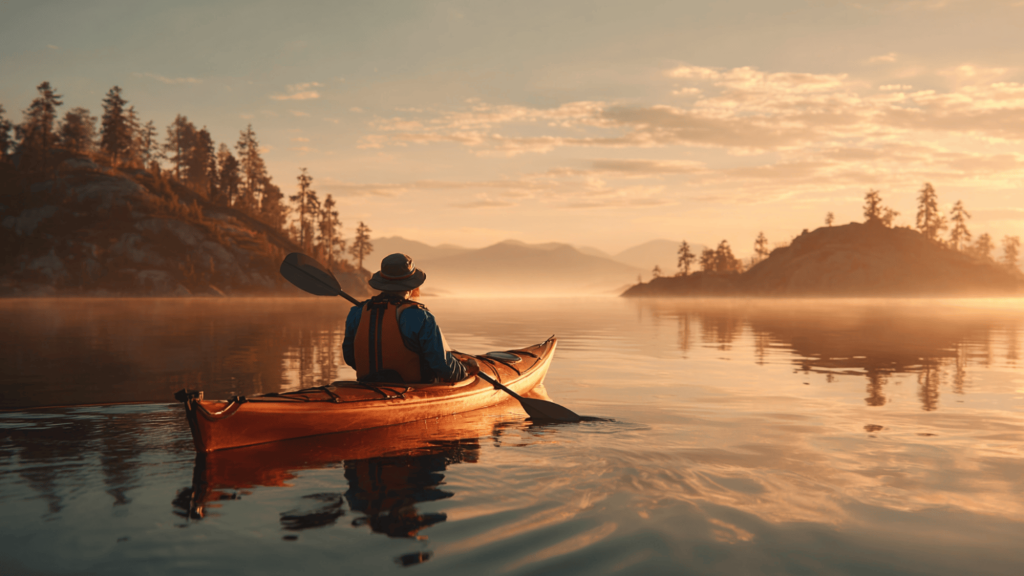
Lakes are often the calmest option, making them great for beginners and casual paddlers. With little current or wave action, your speed mostly depends on your paddling effort and skill.
Unless there’s a strong wind, you can usually expect steady, predictable progress, making lakes one of the easiest places to track your pace.
2. Rivers

Rivers add variety because the current can either help or challenge you. Paddling downstream often feels easier, allowing you to cover a mile more quickly with less effort.
Going upstream, however, can be much tougher and slower. River conditions change frequently, so being prepared for shifting currents is crucial to maintaining a steady pace.
3. Ocean
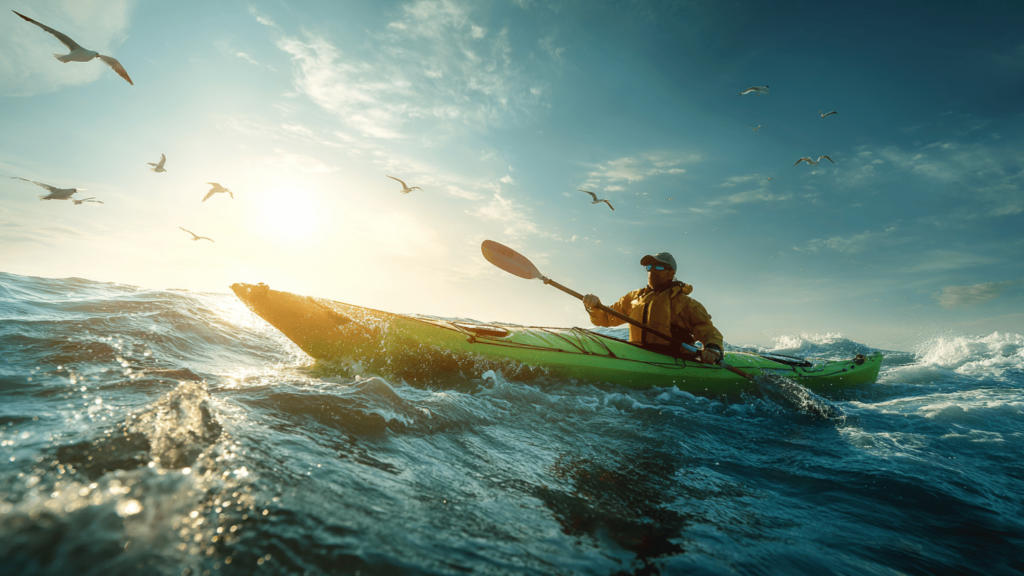
The ocean brings the most unpredictable conditions. Waves, tides, and wind can either help you move faster or slow you down considerably.
Unlike lakes or rivers, ocean kayaking requires more awareness and skill to stay on course. Due to the constant changes, mile times in the ocean vary significantly depending on the day’s conditions.
Tips to Kayak Faster
If you want to shave off some time from your mile or simply paddle with less effort, a few small changes can make a big difference. Here are some practical tips to help you kayak faster and more efficiently:
- Improve your paddling technique by focusing on engaging your core muscles, rather than just relying on your arms. Proper stroke form helps you move smoothly and with less wasted energy.
- Use the right paddle size – A paddle that’s too short or too long can slow you down. The right size lets you maintain a steady rhythm and better control.
- Build strength and endurance – Regular exercise, especially for your arms, shoulders, and core, increases your stamina and helps you keep a stronger pace over time.
- Travel light – Extra weight in your kayak makes paddling harder. Carry only what you need so you can glide through the water more easily.
By focusing on technique, equipment, and fitness, you’ll notice steady improvements in your speed.
Even small adjustments can help you cover a mile more quickly while making the whole kayaking experience smoother and more enjoyable.
Safety and Planning Considerations
Knowing how long it takes to kayak a mile isn’t just about speed; it’s also about safety and smart planning.
When you understand your pace, you can estimate how long trips will take, which helps you avoid getting stuck on the water after dark or running out of energy too soon.
Always factor in rest breaks, changes in weather, and possible currents that might slow you down.
If you’re planning a longer outing, it’s a good idea to carry extra water, snacks, and safety gear, such as a life jacket and whistle.
Let someone know your route and expected return time, especially if kayaking alone. Combining pace awareness with safety steps ensures a smoother, more enjoyable water experience.
Wrapping Up: Understanding Your Kayaking Pace
Determining how long it takes to kayak a mile provides a solid foundation for planning safe and enjoyable trips.
While the average time can vary based on your kayak, conditions, and skill level, having a realistic expectation helps you stay prepared and confident on the water.
Remember, kayaking isn’t just about speed; it’s also about comfort and safety.
If you’re paddling on a calm lake or tackling a lively river, knowing your pace helps you set better goals and avoid surprises.
Ready to put this knowledge into practice? Grab your kayak, track your own mile time, and see where you fit.
With each trip, you’ll gain more confidence, improve your technique, and enjoy the water even more. Paddle smart, stay safe, and have fun out there!


